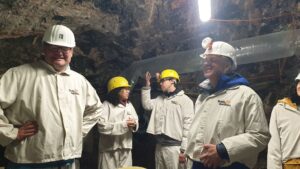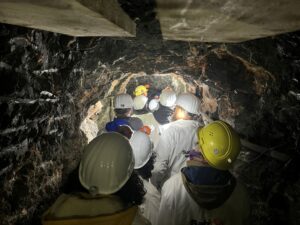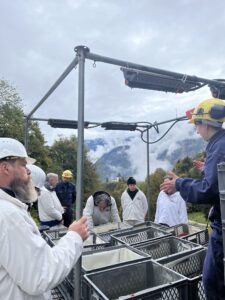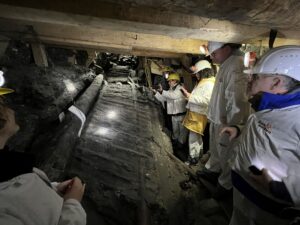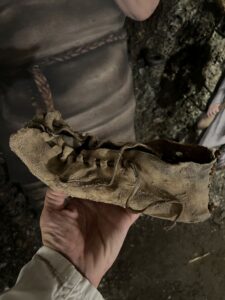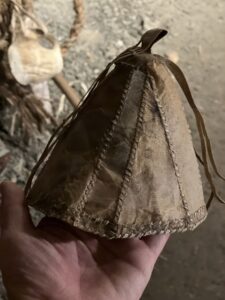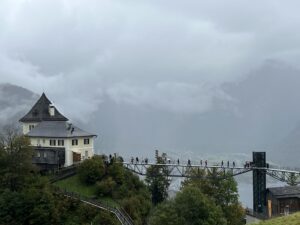HEAS Excursion to Hallstatt’s Prehistoric Salt Mine: A Journey Through Time
More On Article
- HEAS Deputy Head Promotes Archaeological Publications in Vienna
- A short and sickly life. Multi-indicator analysis of an infant from a late antique Italian burial site (Piano della Civita, Artena, 3rd-5th cent CE).
- Fire Use During the Last Glacial Maximum: Evidence From the Epigravettian at Korman' 9, Middle Dniester Valley, Ukraine
- New Paper Published!
- HEAS Members awarded FWF grant for project on Geochemical ENhancEment of Ancient DNA from SedImentS
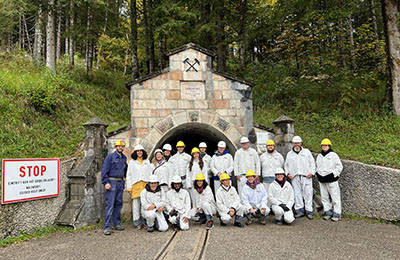
On Friday, October 4th, 2024, 17 members of the Human Evolution and Archaeological Science (HEAS) research network from the University of Vienna set off for a remarkable two-day excursion to Hallstatt, a UNESCO World Heritage Site famous for its prehistoric salt mines. The group, split into two rented vans, arrived in Hallstatt in the afternoon, where they were warmly welcomed by Dr. Georg Tiefengraber and Daniel Brandner, along with Bernd Paulowitz, the UNESCO Site Manager, and the head of the Hallstatt Museum.
The first day unfolded with a guided tour through the museum, where the group marveled at exceptional archaeological finds from the Hallstatt prehistoric cemetery and the salt mines. The artifacts, meticulously preserved, offered a window into the life and practices of the region’s ancient inhabitants. Following the museum tour, the group visited the iconic photographic viewpoint of Hallstatt, capturing views of the beautiful village, before continuing to the church Mariä Himmelfahrt and the famous ossuary, known for its collection of painted skulls.
After a joint dinner, the group embarked on an evening hike, led by Daniel Brandner, up the mountain to the research center. Along the way, they encountered numerous fire salamanders, which added an extra touch to the excursion.
The second day began with the remaining members of the group, who had stayed in Obertraun, joining via the Salzbergbahn cable car. They were greeted by Dr. Tiefengraber and given an in-depth tour of the prehistoric cemetery, where the historical significance of the site became palpable.
After a hearty lunch provided by colleagues from the Natural History Museum (NHM) in the archaeological research center, the group embarked on an underground adventure, led by Daniel Brandner and Valentina Laaha. This was the highlight of the excursion: a guided tour through the Bronze and Iron Age archaeological excavations deep inside the salt mine. Participants had the unique opportunity to try their hand at ancient salt mining using bronze pickaxes, and were shown the location of Europe’s oldest wooden staircase, still preserved within the mine.
The prehistoric mine’s artifacts, such as the countless pinewood torch remnants, textile and leather finds, and well-preserved coprolites, fascinated the group, offering a direct connection to the day-to-day activities of prehistoric miners. Back on the surface, the team explored the archaeological find-washing and desalination stations, learning how artifacts are cleaned, processed, and analysed.
In the evening, the group returned to Vienna, filled with appreciation for the warm hospitality and expert guidance provided by the NHM team. The first HEAS scientific excursion was a resounding success, and participants are already looking forward to future opportunities and cooperations to delve deeper into the region’s rich archaeological heritage.

